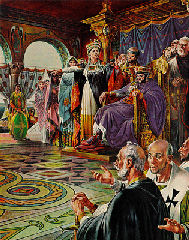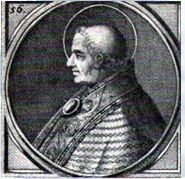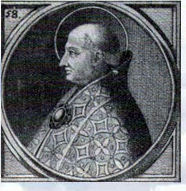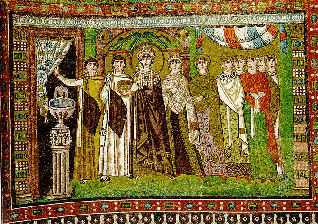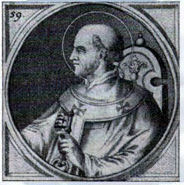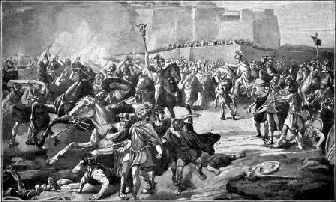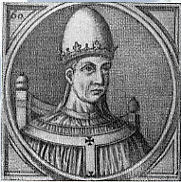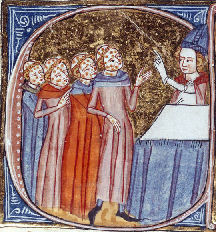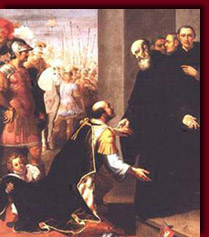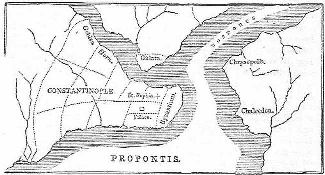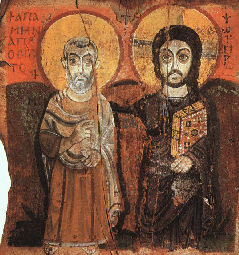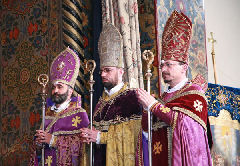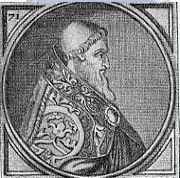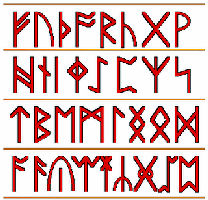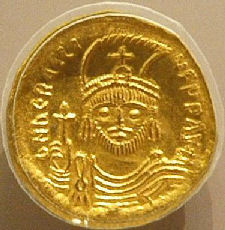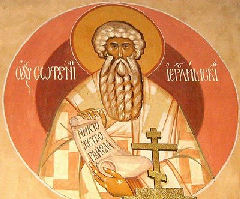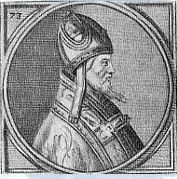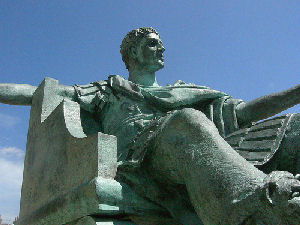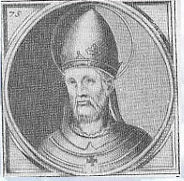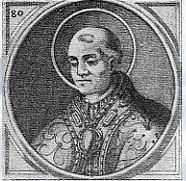Chapter 3: Eddie and the Colonel
The Second Disappearing Act
By the middle of the fifth century St. Peter’s authority was emphasized in virtually every papal action. Pope Leo I unified the entire Roman patriarchate, which amounted to most of Europe. Whenever a decision was needed, he accepted responsibility. In the Council of Chalcedon in 451, Leo brilliantly refuted the heresy of Eutyches concerning the dual nature of Jesus by succinctly explaining that Jesus had two distinct natures in one person. Even the eastern bishops conceded that St. Peter had spoken through Leo. Because the bishops refused to acknowledge his general right to speak for the Church, Leo found it difficult to accept the council’s conclusions, but he did. So, by almost any measure the argument about whether Jesus had one nature or two was settled. The pope had articulated it; the council had formalized it; the pope had ratified the council’s wording.
Nevertheless, by the end of the century much of the eastern Church no longer subscribed to this formulation. The Monophysites contended that Christ’s two natures were intermingled in one person in which the divine nature invariably held sway; He therefore had one will. In the middle of the sixth century, the issue came to a head again. The emperor in Constantinople, a confirmed Chalcedonian named Justinian, sought peace with the Monophysite majority in the east. Although his wife, Theodora, was also an ardent Monophysite, much more was at stake than maintaining peace with the little missus. Justinian sought the support of the many Monophysites in Syria for his planned campaign against the Persians. It is time to introduce the deacon Vigilius, a scion of one of the few remaining Roman families boasting an imperial pedigree. Nature more than nurture may therefore explain his ambitious and devious character. In 531 Pope Boniface II, who had himself been appointed by Pope Felix IV, nominated Vigilius as his successor. However, the presentation of Vigilius to the people and the clergy provoked such a vituperative reaction that the pope withdrew his appointment and burned the decree that authorized popes to name their successors. There must have been a back-story for this peculiar episode. If Sr. Mary Immaculata had heard me suggest this, I would have earned detention for a month, but I envision Vigilius as a sort of Eddie Haskell in clerical garb, a brown-noser whose motives were transparent to everyone except the object of his attentions. I can just hear him toadying up to Pope Boniface and whispering compliments in a syrupy voice. “Today’s benediction was especially inspiring, Your Holiness.” In actuality Pope Boniface was succeeded by John II and then in 535 by Agapetus (sometimes spelled Agapitus) I. One of the latter’s first acts was to designate Vigilius as his representative in Constantinople. This was a decidedly important post, but the new pontiff’s primary aim may have been to get Vigilius out of his hair. In Constantinople Vigilius hitched his wagon to Empress Theodora’s star. (“What a stunning necklace graces your Imperial Majesty’s swanlike neck! Are those amethysts?”). She was outraged that Pope Agapetus had deposed her friend and fellow Monophysite Anthimus as Patriarch of Constantinople and had personally consecrated Menas (sometimes written Mennas) as his successor. She devised a plan for regime change in Rome. Vigilius apparently agreed to assist Theodora in the scheme; he may have even co-authored it. She provided him with a purse full of gold as well as letters detailing the steps necessary to secure the papacy. Vigilius promised that upon becoming pontiff he would accommodate the Monophysites and restore Anthimus. When news of Agapetus’s death in 536 reached Constantinople, Vigilius grabbed his DIY pope kit and made a beeline for Rome. Unfortunately, by the time that Vigilius arrived, there was already a new pope named Silverius. His selection was largely due to the intervention of Theodatus, the Ostrogoth king who ruled much of the Italian peninsula. Silverius was no saint;[1] he reportedly bribed Theodatus to support him. Nevertheless, all Roman clergymen gave their approval in writing to Theodatus’s selection.Silverius’s pontificate started badly. The weather was horrendously cold, probably due to an eruption of the volcano Krakatoa on the other side of the globe. Then in August of 536 the new Ostrogoth king, Vitiges, laid siege to Rome. Churches outside the city were desecrated along with the graves of many martyrs.
The other power in Italy in this era was the last great imperial general, Belisarius. He temporarily broke Vitiges’s siege in December of 536. At that point Belisarius’s wife Antonina, who was in league with Theodora and the Monophysites, evidently provided him with (probably forged) evidence that Pope Silverius was actively conspiring with the Ostrogoths. Belisarius summoned His Holiness to Ravenna to answer the charge. Although Silverius vehemently denied every accusation, Belisarius stripped him of his papal pallium, demoted him to the level of monk, and then sent him into exile. This time Vigilius scrupulously implemented Theodora’s plan and got himself elected pope. He then made quite certain that Silverius was never allowed to return to Rome. Eventually Silverius was persuaded (or perhaps forced) to abdicate[2] and finally died on a prison island, perhaps of starvation, perhaps of murder, in 537. Both popes were selected by shady processes, and for a time they simultaneously claimed the papacy. Nevertheless, Vigilius and Silverius are both on the official list; neither is considered an antipope. For a while there were actually two legitimate popes! Sr. Mary Immaculata described the institution of the papacy as a single unbroken chain. Our class could never have imagined that some sections of the chain contained two parallel links, and the possibility of two simultaneous pontificates never surfaced.Although the attention and energy of all parties involved in Vigilius’s pontificate seemed to focus on the resolution of the Monophysite issue, it’s not as if nothing else was happening:
• In 539 the Goths razed Milan. They killed hundreds of thousands of men and handed over the women as slaves to their Burgundian allies.
• In the summer of 542 the bubonic plague struck the Egyptian city of Pelusium. In the same year it caused tens of thousands to die in Constantinople. Within the next 160 years the population of Europe decreased by an estimated 50-60 percent!
• In 546 Totila, king of the Ostrogoths, sacked Rome after a siege of three months.
• Belisarius retook the city after Totila left to do battle in Lucania.
• Totila recaptured Rome in 549 after Belisarius left Italy.
• By the end of 550, Totila and the Ostrogoths held almost all of Sicily and Italy.
• Rome’s population shrank to around thirty thousand. A city that once boasted over a million inhabitants now housed only about 3 percent of that. One can easily envision tumbleweeds pinballing through the Forum.
• The imperial army led by Narses finally defeated the Ostrogoths in 552.
In 543 Emperor Justinian’s theological adviser, Theodore Askidas, hatched a scheme to eliminate the conflict between the orthodox Christians and the Monophysites. Three somewhat obscure writings consistent with the Chalcedonian doctrines were singled out: the works of Theodore of Mopsuestia, Theodoret of Cyrus, and Ibas of Edessa, together known as “The Three Chapters.” The plan called for Justinian and Pope Vigilius to condemn these writings as heretical without directly commenting on the Chalcedonian formulation. Vigilius had previously promised Theodora to go much farther, but after his papal election he equivocated. Askidas hoped to provide all parties with face-saving “plausible deniability.”
Justinian signed off on the plan. The first step required that Pope Vigilius be arrested. He was apprehended on St. Cecilia’s Day and escorted to Constantinople. For quite a while Vigilius remained firm in his support of the conclusions of Chalcedon, but in April of 548 he resumed communion with the Patriarch of Constantinople, Menas, who had been excommunicated the previous year. The pope then published a “judgment” condemning the Three Chapters. Although he protested that he never meant to impugn the authority of Chalcedon, even his former supporters branded him as a traitor to the unbroken string of orthodoxy in which the See of Rome and Sr. Mary Immaculata took great pride. The bishops of Africa excommunicated him. Even many of his own retinue repudiated him.
The plan had gone awry; Emperor Justinian hoped to curtail controversy, not promote it. He attempted to smooth things over by giving Pope Vigilius permission to withdraw his judgment, which he did. The emperor then released his own condemnation of the Three Chapters and persuaded Vigilius to agree in writing to revive his own denunciations as soon as the heat was off. (“You may have every confidence that I would be most pleased to provide such documents at the first propitious instant. It is so striking, your Imperial Potency, how the rakish angle at which you wear your diadem accentuates your athletic physique.”) Instead Vigilius convened a synod of bishops in Constantinople. After again excommunicating Patriarch Menas for condemning the Three Chapters, he prudently concluded that flight was his best option and sought sanctuary in a nearby church. Imperial officials who tracked him there found a pitiful figure timorously grasping a collapsing altar column. What a picture – the Holy Father himself clutching at the altar with every ounce of his strength as imperial troops attempted to pry his fingers loose! Only the intervention of an outraged congregation prevented them from physically dragging him off. The pope eventually retreated to Chalcedon, of all places.The emperor called his own council of bishops with the undisguised purpose of condemning the Three Chapters. He invited an equal number of bishops from each of the five patriarchates, a formula that insured domination by the eastern bishops. Pope Vigilius naturally tried to placate the emperor. He did not attend the council in person, but he issued a carefully worded statement condemning portions of the Three Chapters in hope of getting back in the emperor’s good graces. Justinian, however, had seen enough of Vigilius’s trickery. The emperor produced secret agreements signed by Vigilius, including the pope’s repeated promises to condemn the Three Chapters. The council denounced both the Three Chapters and the pope. So at this point Pope Vigilius had been rebuked by bishops in both the east and west.
Pope Vigilius was then detained against his will in Constantinople. After he and his retainers were treated roughly by the emperor’s men, Vigilius wrote a series of retractions. He was finally released in 555, but he died on the journey back to Rome. So, for seven or eight years: Rome had again been without a bishop; the patriarch of the entire western empire was missing; the heir to the See of Peter was nowhere to be seen.
After Vigilius
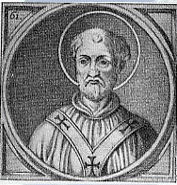
Despite this irregularity, Pelagius’s pontificate has always been considered legitimate, and it started a trend. The emperor or his representative in Ravenna, called “exarch,” was asked to confirm every pope through 741 – almost two centuries! Accompanying the nominee’s name was a large cash payment. Until the confirmation was obtained, the pope was not installed.
How could it have come to this – the pope serving at the discretion of the civil authority? What happened to “Render to Caesar the things that are Caesar’s and to God the things that are God’s”? Surely this must have been the nadir of the papacy, no?
The Infallible Heretic
The Monophysite controversy concerned tightly drawn distinctions about terms applied to Jesus and/or the Holy Spirit. These may well be important theological issues; they certainly demanded substantial attention from the popes, the emperors, their wives, the bishops, and many others. However, they probably had little impact on anyone’s daily life. It is hard to think of any action that would be affected by whether one believed that Jesus’s natures were discrete or commingled.
A staggering number of such theological controversies surfaced over the first few centuries. In many cases the popes needed to judge which side was consistent with scripture and divine tradition and, almost as importantly, consonant with what previous popes had decreed. Bishops of Rome were generally very circumspect in their rulings. When a new issue arose, it sometimes took the Holy See years, decades, or even centuries to fashion a coherent position.
For several centuries Christ’s peculiarly dual nature dominated theological discourse. Most Christian theologians agreed that in some respects He was one, and in other respects He was two. Since Pope Leo’s time the Holy See had consistently avowed that Jesus was and is one “person” with two “natures.” This was fine as far as it went, but what if someone used a word other than “person” or “nature”? For example, the Monophysites in Vigilius’s era averred that Jesus had one “will.” Wrong answer. Heretics! Anathema!
The Do-It-Yourself Heresy Kit

* * *
In 634 Sergius, the Patriarch of Constantinople, referred just such a thorny question to Pope Honorius I. Pay close attention; the details of this episode are tricky, and Sr. Mary Immaculata has prepared a quiz for you to take at the end. Sergius informed the pope that Emperor Heraclius had been refuting the Monophysites in Armenia twelve years earlier by talking about the one ενεργεια (“energy” or “operation”) of the Incarnate Word. Cyrus, the local Armenian bishop, worried that this sounded somewhat heretical. He consulted Sergius on the matter. Sergius ran the term through Lexis-Nexis and discovered that it had been used once by his predecessor, Menas, in a letter to Pope Vigilius.[5] By the time that Sergius got back to him with this news, Cyrus had become the Patriarch of Alexandria, and he had employed Heraclius’s phrasing in a set of propositions that had helped convince a large number of Monophysites in Egypt to reunite with the Church.
When a hard-line monk named Sophronius discovered this situation, he demanded that the matter be submitted to the pope. Sergius agreed, but he also recommended caution to Cyrus and Sophronius: Don’t use the phrase “one energy” because that might be Monophysite. On the other hand, don’t prescribe that Jesus had “two energies” either, because that might be construed as the Nestorian heresy, which claimed that Jesus possessed two persons, like someone with multiple-personality disorder. An excellent tactical reason for avoiding the insistence on two energies was that it might induce the Egyptian converts to revert to the Monophysite heresy.E.B. White would have disparaged Honorius’s written reply to Sergius. It was not a paragon of elegant style. On the whole Honorius endorsed Sergius’s approach, but he neither precisely condemned nor sanctioned the “one energy” and “two energy” formulation. Instead he tiptoed around the issue, and occasionally he stumbled. Perhaps the worst sentence was this one: “Wherefore we acknowledge one Will of our Lord Jesus Christ, for evidently it was our nature and not the sin in it which was assumed by the Godhead, that is to say, the nature which was created before sin, not the nature which was vitiated by sin.”
Whoa, Nellie! “One Will”, and with a capital W yet? The pope can’t say that! What could Honorius have been thinking? How could any pope possibly compose such a letter? This had been the headline doctrinal issue for the last few centuries, and it had been authoritatively decided to the relief, if not the satisfaction, of everyone in the Church. If the text bore a more recent date, I would suspect that Honorius had cut and pasted some of Sergius’s text into his own letter and just overlooked the mistake in the proofing process. How could any pope of that period write out in longhand the words “one Will”?
Patriarch Sergius quickly acted on the pontiff’s response. He composed an “Ecthesis” that, congruent with the contents of Honorius’s letter, counseled everyone to affirm the one Will and to avoid mentioning either one energy or two energies. Emperor Heraclius issued the document near the end of 638, shortly after Pope Honorius’s death. Before Sergius died at the end of the same year, he convoked a great synod at Constantinople to promulgate the Ecthesis.
By 638 Sophronius had risen to Patriarch of Jerusalem. He published a well-reasoned response to the Ecthesis. At that point all purgatory broke loose. For one year and eight months the emperor held up the confirmation of Severinus, who had been elected to succeed Pope Honorius, but who had refused to accept the Ecthesis. Eventually Severinus was confirmed, but his pontificate lasted only two months. Pope Severinus’s successor, John IV, also anathematized the Ecthesis. John Symponus, a monk who claimed to have composed the controversial letter on behalf of Pope Honorius, asked for and was granted some face time with Pope John in order to explain how the original letter’s meaning was not heretical. Comes the dawn! Before I learned about John Symponus’s role in this affair, I had pictured Honorius himself laboring over every connotation of every word of this crucial theological treatise for his counterpart in the eastern half of the empire. I visualized him sitting amid impressive tomes of theological texts handwritten in Greek or Latin, each at the ready in case he needed to pinpoint a precedent or clarify a nuance. In my mind’s eye he consulted scroll after dusty scroll of papal bulls. I figured that the final version of the letter – which would, after all, serve as the basis for a major missionary program and a doctrinal thesis published by the emperor himself – must have been the painstaking result of rewrite after rewrite. Now an entirely different picture crystallizes. Honorius reminds me more of a seventh century version of Colonel Blake from M*A*S*H, sitting restlessly in his office eying his fishing poles in the corner. John Symponus is his Radar O’Reilly, placing one document after another in front of him for his signature every morning before allowing the pontiff to spend the rest of his day angling in the Tiber. “Sign right here, Your Holiness. No, I wouldn’t bother to read it. It’s mostly a bunch of technical junk.”Pope John seemed to understand and sympathize with John Symponus’s explanation and eagerly sought to present Honorius’s epistle in the best light. However, the fact the Monophysites themselves often argued in terms that closely parallelled those employed by John Symponus/Honorius rendered the letter practically indefensible.
The emperor himself disavowed the Ecthesis. His successor, Constantine III, withdrew the Ecthesis and substituted a “Type” that prohibited discussion of the subject of Jesus’s will(s). Pope Martin I, the second pope after John IV, called the Lateran Council of 649, which denounced both the Ecthesis and the Type. The emperor arrested Martin and shipped him in chains to Constantinople; he never saw Rome again.In 680 Emperor Constantine IV Pogonatus, convened another general council, this time at Constantinople. By then Honorius had been gone but not forgotten for forty-two years. Pope Agatho, the third pontiff after Martin, sent legates to preside at the council. They brought with them a papal letter denying that the Roman See had ever been in error. The pope’s letter also condemned all of the other players in the controversy – Sergius, Cyrus, etc. – without mentioning Honorius. The council, however, was allowed to read Honorius’s letters, which had never previously been available to the bishops. Imagine the reaction when they first saw that “one Will” line! The council declared that, in addition to those named in Pope Agatho’s letter, Pope Honorius was guilty of heresy for following Sergius’s dogma. At the end of the council, the bishops shouted in unison “Anathema to Honorius!” Every single bishop and all the papal legates signed the letter to the pope anathematizing all participants, including Honorius.
Pope Agatho died before the letter reached Rome. It was up to his successor, Pope Leo II, to accept or reject the council’s conclusion. What a precarious situation! The Church’s official position was that each pope held the keys of the kingdom. All Christians were “bound” by the pope’s judgments. If Honorius was a heretic, as the council had unanimously ruled, then the extraordinary authority of the papacy was not just tarnished. For all intents and purposes the concept of papal inerrancy was forfeit. One cannot overstate what a serious problem this posed for the papacy. Honorius had exchanged doctrinal communications with the number two and number four officials in the Catholic Church. Based on his statements as the heir to the See of Peter, they – and the emperor as well – had devised a program to unite the Church under one universally accepted statement of belief. All parties involved evidently acted in good faith. No coercion was reported. Nevertheless, over four decades later they were all branded as heretics and excommunicated from the Church.Pope Leo responded to the council’s findings with slick legerdemain. His approval condemned Honorius without addressing the claim that he was a heretic. Instead it rebuked him for “profane treachery” in his attempt to pollute the purity of the immaculate faith. What irony! Leo let Honorius off the hook by substituting the fanciful crime of willful treachery for the clearly demonstrated unintentional heresy. The pope can be evil, but he can’t be wrong.
Due to a dearth of good visuals, CNN’s gavel-to-gavel coverage of the council glossed over the pope’s written reaction. In fact, Leo’s clever wording probably received little attention until much later. The Church itself behaved as if Honorius was a convicted heretic. Up until the 1700’s the lessons of the breviary (the official daily prayers and lessons for meditation) for June 28, the feast day of Pope Leo II, contained a condemnation of Pope Honorius. He was listed there among those excommunicated by the council. The Papal Oath, sworn by every single pope through the eleventh century, mentioned that Honorius had been “smitten” with eternal anathema because he assisted the base assertion of the heretics.Leo himself wrote to Erwig, a Visigoth king in Spain, that Honorius had tarnished the previously spotless Apostolic tradition. What an assertion! We have almost no correspondence from the early popes, nor did Leo. Some pontiffs may well have spoken or written much more objectionable things than those in Honorius’s letters. After all, for several centuries no agreed-upon scripture or creed even existed. It seems scarcely credible that during the centuries in which Church doctors were busily sorting out which books contained dogmatic truths and which were blasphemous, no Bishop of Rome ever used the word “will” in the singular when speaking of Christ. Fragmentary copies of books that were apparently used in religious services in the early years have been rediscovered recently. Several contain passages that could in no way be reconciled with the seventh-century version of Church dogma. Did no pope ever cite any of them? Furthermore, how could anyone claim that Vigilius’s pontificate – from its disgraceful beginning through its tragicomic about-faces on the Three Chapters up to its demise amidst universal repudiation – was anything less than a stain on the Apostolic tradition?
When – more than a thousand years later! – the ecclesiastical authorities finally got around to considering the question of papal infallibility, the heretical pope’s letter ranked as one of the thorniest problems with which they were forced to deal. Chapter 23 addresses the clever ways that the First Vatican Council devised for circumventing the difficulties.
Sr. Mary Immaculata’s Heresy Quiz (Answers below)1. Was Pope Honorius guilty of heresy?
2. What is the name of the heresy that brought all this on?
3. What is the name of the heresy that was condemned by the Council of Constantinople?
4. How many Wills did/does Jesus have?
5. How many “energies” did /does Jesus have?
6. How many natures did/does Jesus have?
7. Did the Church treat Pope Honorius as a heretic?
8. Was Pope Honorius excommunicated from the Church?
9. How many popes successfully avoided dealing with the issue?
10. (Extra Credit) Name them.
* * *
“S’ter, S’ter! Are we done with this heresy junk, yet?”
“Almost. Offer it up to His honor and glory. The next person who complains will be kneeling on rice in the hallway until he has memorized the entry in the Catholic Encyclopedia on ‘Monothelitism and Monothelites.’ I’m warning you; it is 7,154 words long.”
[1] Well, yes, as a matter of fact he was, at least officially. His inclusion on the list may have been in response to his ill treatment by Belisarius and Vigilius.
[2] It was not clear in the sixth century that the option of abdicating was open to the pope. Evidently no pope had tried it. The “keys of the kingdom” verses make no mention of laying the keys aside. The issue was finally settled in the thirteenth century (see Chapter 12).
[3] Don’t bother to ask a pope to pick horses or lottery numbers for you. The council limited his infallibility to ex cathedra proclamations, i.e., teachings about faith and/or morals to the entire Church.
[4] The claim that there was once a female pope is too ridiculous for even this work to consider. Nevertheless, the collection of busts of the popes in the cathedral in Siena evidently included one of Pope Joan until 1601.
[5] But remember that Pope Vigilius, in one of his orthodox moods, had excommunicated Menas for heresy. Moreover, it turned out that the letter was, alas, a forgery. The Monophysite and Monothelite controversies can make almost anyone’s head spin.
 | |
 | |
Bankable Bar Bets
$ The winter of 536 was extremely bitter in Europe. This was probably caused by an eruption of Krakatoa.
$ In the five hundred years after the birth of Christ, Rome lost more than 97 percent of its population.
$ For a period of time Silverius (in exile) and Vigilius were both officially recognized popes.
$ The kidnapping of Pope Vigilius by the emperor left Rome without a resident bishop for more than seven years. During his absence Rome was sacked twice. Vigilius died on the voyage back to the city.
$ After Vigilius’s papacy, the emperor in Constantinople or his representative in Italy appointed or approved every pope for two centuries.
$ Pope Honorius I was unanimously declared anathema by the Council of Constantinople. For many centuries he was condemned in the breviary and the papal oath.
Answers to the quiz:
1. No. Pope Leo II never approved the council’s ruling on the subject of Honorius’s heresy.
2. Monothelite.
3. Monophysite.
4. Jesus has two wills, human and divine.
5. Trick question. It depends on what is meant by “energy.”
6. Jesus has two natures, human and divine.
7. The Church almost but not quite treated Pope Honorius as a heretic.
8. Pope Honorius was excommunicated, but not until he had been dead for four decades.
9. Nine popes successfully avoided dealing with the issue: Severinus, John IV, Theodore I, Martin I, Eugene I, Vitalian, Adeodatus II, Donus, and Agatho.

